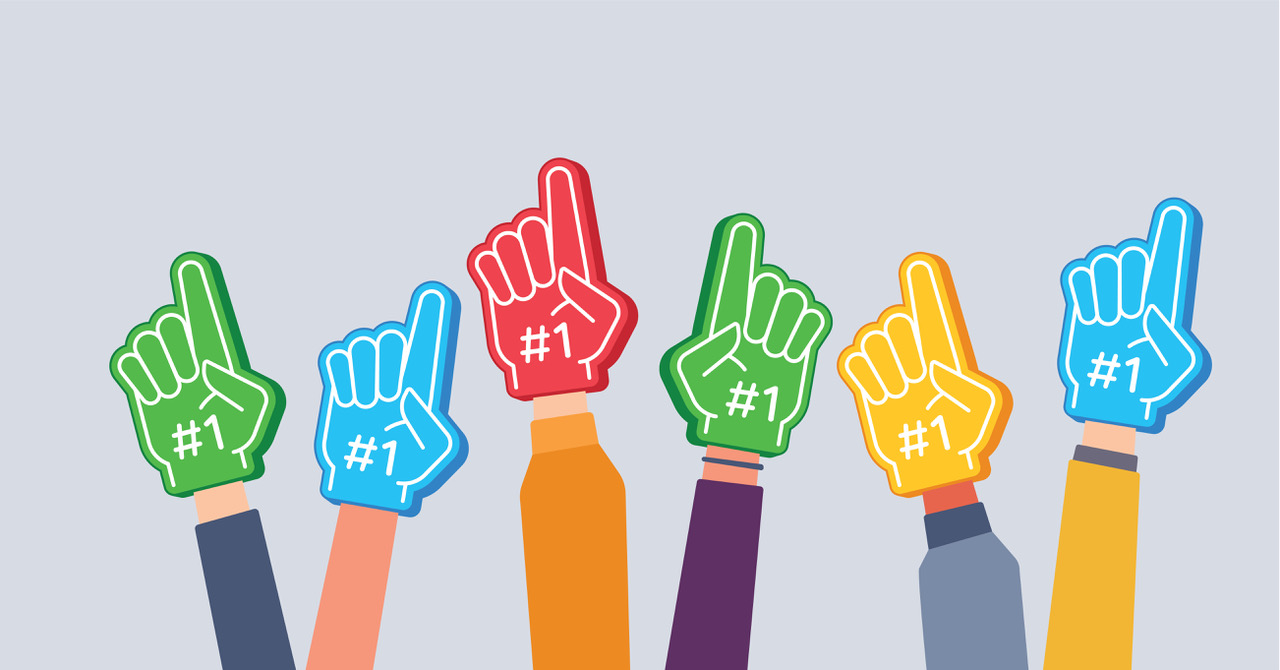Word-of-mouth marketing works which is why referral programs for your content business can be a good investment.
It drives $6B in consumer spending. It accounts for an estimated 13% of consumer sales.
A word-of-mouth marketing impression nets five times more sales than a paid impression.
People also are 90% more likely to trust a brand recommended by a friend. (Invespcro collected all those reports.)
Word-of-mouth marketing works. It can net as much as 5X more sales than a paid impression. #referrals #contentbusiness #startup Share on XNow, are you working word-of-mouth marketing for your content business?
While you may not sell products and services like most brands, you do need to sell your content if only to grow an audience right now.
Why not tap into people who already like what you create enough to subscribe to it?
Sure, you can add that “please-forward-or-refer-to-a-friend” note at the end. But why not take it next level? Create a referral program.
Tilt Advice
If your fans help “sell” your content, they should be rewarded. Referral programs allow you to do that. They have an exponential effect on subscriber growth. Research has shown a referred customer is more loyal and four to five times more likely to refer another customer.
Fans should be rewarded for "selling" your content. That's possible with a referral reward program, says @AnnGynn. #contententrepreneur #creatoreconomy Share on XReward types
Pick a reward that will be attractive to your fans and fits in your budget. It could be made in cash, creator coins, gift cards, merchandise, account credits, or discount codes. You also could set up a leader board and a public recognition system. For example, you could award a special badge to members of your community who achieve certain referral levels.
Caveat: If your rewards are finite (i.e., a budgeted financial amount), set a cap for your referral program so you don’t make promises that you can’t keep.
At the same time, pick a reward structure that also works for your business and your fans, including:
- One-sided: The person who makes the referral receives a reward.
- Double-sided: Both the person who made the referral and the person who signed up receive a reward.
- Multi-tiered: The person who makes the referrals receives bigger rewards the more people they get to sign up. For example, Matthew earns one point for new subscribers one through five. Once he makes his sixth referral, he earns 10 points for every new subscriber.
Reward automation
While you could probably implement manual workarounds to manage a few referrals, it becomes too hard and too time consuming to track many more. We recommend setting up an automated system. Referral software typically creates a customized link for each subscriber and keeps track of their activity. With some tools, the people who refer have access to their own dashboard.
Capterra created this detailed review of rewards tools. Keep in mind that the analysis was primarily done for traditional B2B and B2C companies.
At The Tilt, we use Sparkloop for the $TILT coin referral reward program. Its pricing calculator indicates it would be $99 a month for up to 20K subscribers. We don’t require our audience to sign up for the referral program. Instead, a unique referral link is included at the bottom of the recipient’s newsletter.
@TheTiltNews uses @spark_loop for its subscriber referral program. It creates a unique referral link at the bottom of the newsletter for each recipient, says @JoePulizzi. #referral #creatorcoin Share on XThe Tilt Discord community mentioned Genius Referrals as another option. Its start plan covers up to 10K subscribers for $49 a month. Referral Magic also was cited. It doesn’t include pricing on its site.
While most of the referral software programs focus on email subscribers, there are tools that help other formats. Refer-O-Matic lets podcasters create a rewards program. Their listeners can sign up for their referral program and receive a unique link to share. If that link is used, the referring listener is rewarded.
Cheaper acquisition
How much would it cost to acquire a new subscriber through paid ads on Facebook, for example? Inspired by an example from Referral Rock, let’s do some math. OK, you spend $20 on Facebook ads and net one new subscriber from the campaign. The acquisition cost for that subscriber is $20.
Now, let’s say you get that new subscriber from Facebook refers a new subscriber. As part of your referral program, that referral is rewarded with $5. Thus, the acquisition cost for that new subscriber is $5. So, for the those two subscribers (one from Facebook and one from a referral), the cost of acquistion is $12.50 per subscriber. You just brought down your acquisition costs by 37.5%.
Additional tips
To learn more, you can attend SparkLoop University. It’s easy to graduate with just five short videos and includes a free 30-day trial.
Social Media Today also offers 10 insights into referral reward programs. We found a couple were particularly unexpected. 1. Time the referral ask to when the subscriber has had an “aha” moment, i.e., a positive experience. It may increase referrals by as much as 36%. 2. Use a notification system to alert them when a referral has been completed. That will encourage them to keep referring.
2 success stories
In a recent article, ReferralRock outlined some familiar successful referral programs. You’re probably familiar with them: Morning Brew and TheSkimm.
Of Morning Brew’s initial subscribers, 30% came through referrals. It grew from 100K to 1.5M in 18 months. TheSkimm was one of the first newsletters to launch a referral program. It says 20% of its subscribers today come through referrals.
30% of @MorningBrew initial subscribers came from referrals. @TheSkimm attributes 20% of subscribers to referrals. #Reward #Fans #contentbusiness Share on XSpecial thanks to Rafa Bracho of Newsletter Magico for sparking this article’s origins and Stryker and Albertocv from The Tilt Discord community for their input.
About the author
Ann regularly combines words and strategy for B2B, B2C, and nonprofits, continuing to live up to her high school nickname, Editor Ann. An IABC Communicator of the Year and founder of G Force Communication, Ann coaches and trains professionals in all things content. Connect with her on LinkedIn and Twitter.










